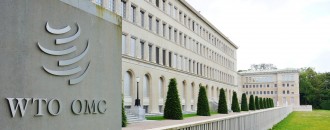
Govt slashes RoSL rates post-GST to 0.39%, apparel industry not happy with the move
Aamir H Kaki
The Government has slashed the rates under the Rebate of State Levies (RoSL) Scheme on export of garments and textile made-up articles to 0.39% from 3.9%, which would impact the industry in a huge way.
A notification issued by the CBEC on Thursday said, “The Ministry of Textiles has issued notification (No.14/26/2016-IT) dated June 27, 2017 revising the rates of rebate in Schedules I, II and III for the RoSL Scheme effective from July 1, 2017. The revised rates are 0.39% for RoSL and 0.23% for RoSL under Advance Authorization-All Industry Rates (AA-AIR) combination respectively."
“These revised rates on garment and textile made-up exports under RoSL Scheme are applicable to exports with Let Export Order dates from July 1 onwards,” it added.
However, the industry is not happy with the rates.
“The 0.39% announced by the Ministry is really low and would in no way help the exporters. This is a huge difference as earlier it was 3.9% of FOB value of exports for Schedule 1 items. Similarly, the RoSL has been reduced from 1.4% to 0.23% of FOB under special advanced authorization scheme (Schedule 2 items),” Apparel Exports Promotion Council said.
“I am just returning from a representation wherein we appealed on behalf of the industry, asking the Government to restore the old rates during the transition period. Since the drawback and RoSL are already impacting the taxes, the 0.39% is towards those taxes that are not getting subsumed in GST like petrol and power,” said Chandrima Chatterjee, Advisor, AEPC to The Dollar Business.
“What we understand is that there are lot of embedded taxes in the GST. So overall the industry is very unhappy about this as they feel with the introduction of the GST, the RoSL is decreasing, the drawbacks are getting diluted and to top it the claiming of drawbacks are taking a lot of time since there are a lot of procedural issues now,” Chatterjee said.
The procedure for claiming drawbacks is very different to what it was earlier and especially businesses in tier II and tier III cities are facing a lot of challenges availing it. The industry has virtually come to a standstill over these challenges, she said.
Chatterjee further said, “We have appealed to the Ministry to give relief during the transition period of 2-3 months as stock booking is done well in advance and orders booked earlier are shipped now. The impact caused by all this is really huge. We are looking at an impact of nearly 7-8%. Though the Textiles Ministry is looking at getting back the old rates, we want the ministry to give us a 'transitionary buffer'.”
We are appealing to them to consider giving the old rates of 3.9% on orders that were booked 3 months ago, as the buyer will not refund the difference amount, she added.
Chatterjee also pointed to some other challenges during the transition period, of 3 months under GST - from July 1 to September 30, 2017.
Categorising the challenges broadly under two heads as Challenges during the transition period and Challenges post GST, Chatterjee gives a detailed view of the issues and the Recommendations that AEPC provides to the government.
1. Challenges during transition period of 3 months allowed from July 1 to September 30, 2017
1. Issue:
Procedural issues for claiming drawback - Full refund of drawback has been allowed, but a new requirement of providing Certificate for port clearance is making the refund process time consuming and unviable. Exporters have to submit certificate in prescribed format at the time of export for claiming full Duty Drawback. Exporters are facing difficulties in obtaining certificates from GST Officers. Designated GST Officers are yet to get familiar with export procedures. In absence of certificate from GST officer, drawback for custom’s portion only is allowed and for the balance supplementary claim needs to be filed after getting certificate from GST Officer.
Recommendation:
Since it is a transitionary provision for duty paid on old stocks, full Drawback may be allowed on the basis of self-declaration only and the requirement for Certificate from GST officer may be dispensed with, in the interest of ease of doing business.
2. Issue:
Drastic reduction in ROSL rate – The RSOL rates have been reduced from 3.9% to 0.39% of FOB value of exports for Scheule 1 items. Similarly, ROSL reduced from 1.4% to 0.23% of FOB under special advanced authorization scheme (Schedule 2 items).
Recommendation:
It is requested that full refund of ROSL be allowed on the analogy provided for drawback refunds indicated above. The full ROSL rates should be provided for both, the Schedule 1 and Schedule 2 items.
3. Issue:
GST on Job work and stock transfers - The industry was not subjected to any tax on Job work and stock transfers. These new cost does not get captured in the drawback route allowed in the transition period.
Recommendation:
The new taxes under GST regime – specifically GST on job work and stock transfer, for which drawback is not available, ITC credit should be allowed for those availing the drawback route.
2. Challenges after transition period , from 1st October 2017 onwards:
1. Issue:
High Transaction cost on account of new compliance requirements under GST - Requirements like tracking/ valuation/ invoicing and remitting taxes for each transaction, large number of invoices to be generated for the multiple style produced and inputs procured for them, multicity production and movement of good, GST on movement of unfinished goods from one unit to another unit, etc - are new compliance requirements that the industry needs to invest on. Besides transaction cost, it will also lead to higher working capital due to investment on the systems and resources to be put for meeting the compliance requirements.
Recommendation:
To offset high transaction cost due to requirements indicated above, it is recommended that MEIS may at least be increased by 2%.
2. Issue:
Blocked Taxes needs to be identified and included in the new drawback rates - Presently, there are substantial amount of taxes remain embedded under GST for which no credits are available.
These are:
Agriculture Sector
Totally exempt under GST where taxes are blocked on farm inputs like seed, fertilizer, pesticide, tractors and other farm sector equipments.
Electricity and Steam
Electricity duties and steam sector including energy cess on coal remain blocked.
Construction and Real estate
Output taxes in construction and real estate sector including stamp duty and registration charges remain non creditable under GST regime.
Fuel Taxes
Taxes on fuel used in textiles and apparel items are outside GST regime.
Miscellaneous Taxes and Levies
State levies such as Mondi Tax on cotton, power wheeling and cross subsidy on electricity, toll charges, road taxes, green taxes, and are not subsumes under GST. This accounts almost 2% of FOB.
Blocked taxes for cotton garments would be 11.9% and for MMF garments it would be 12.87% of FOB.
Detailed working in this regard is already submitted to Drawback committee.
Recommendations:
In order to completely remove the embedded taxes from the cost of exports, duty Drawbacks will be needed in range of 11.9 % to12.87% of FOB.
Earlier too, APEPC had urged the Government to continue with the RoSL Scheme post-GST as it has contributed to the growth of apparel exports.
“The big jump in Apparel Exports is the result of recently implemented incentive - ROSL on export of garments, as it helped the industry to increase the production at very competitive rates for a larger share of global markets. It is important that ROSL is continued even in GST era to ensure sustained growth momentum,” AEPC Chairman Ashok G Rajani had said.






 to success.
to success.